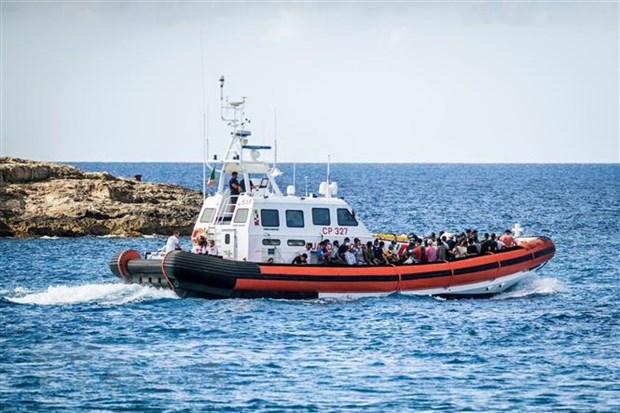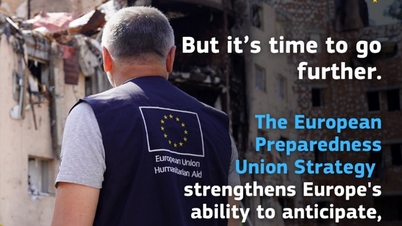The European Union (EU) on June 8 reached an agreement allowing member states to share the reception of asylum seekers or contribute to a common fund managed by the EU to care for migrants.
Speaking at a press conference the same day, Swedish Interior Minister Maria Stenergard, who chaired the negotiations, said that if applicants do not have a chance to be granted asylum in the EU, they will be immediately returned and all asylum applications will be processed within a maximum of six months. According to Ms. Stenergard, countries that are not willing to accept asylum seekers will have to pay financial support of up to 20,000 euros per person ($21,571 per person) into a fund managed by the EU to support migrants.
 |
A ship carrying asylum seekers arrives at a temporary reception facility on the island of Lampedusa, Italy, July 11, 2022. |
However, the issue of where rejected asylum seekers will be sent remains the biggest sticking point in the negotiations, according to EU Home Affairs Commissioner Ylva Johansson. Johansson said no concrete decisions had been made and the issue needed further consideration.
While the EU interior ministers’ meeting was taking place in Luxembourg, German Chancellor Olaf Scholz also held talks on migration reform in Rome with his Italian counterpart, Giorgia Meloni. Scholz asserted that the migration problem could only be solved if member states worked together. Meloni, for her part, expressed confidence that the bloc would reach an agreement on migration policy.
The EC has previously published an EU Action Plan to manage the Western Mediterranean and Atlantic routes, popular crossings for illegal migrants. This is of particular importance for countries struggling with large-scale, uncontrolled immigration.
The number of migrants crossing the Mediterranean Sea into Europe has been increasing steadily in recent days. In just two days, June 5 and 6, the Italian coast guard rescued nearly 1,500 migrants from boats in distress in the Ionian Sea. According to the latest report, in the first four months of the year, the number of arrests of migrants along the Central Mediterranean route increased by 28% to nearly 42,200. The number of arrests on other migration routes decreased by 7% to 47%. Since the beginning of this year, the number of migrants crossing the Central Mediterranean accounts for more than half of all illegal entries into the EU. In addition, illegal border crossings across the Mediterranean in the first four months of the year increased fourfold compared to the same period in 2022, marking the highest level since statistics began in 2009.
The number of migrants is expected to continue to increase as the weather in the Mediterranean region becomes warmer during the transition from spring to summer. However, according to analysts, favorable weather is not the only reason for the increase in the number of migrants to Italy. Economic crisis, political instability, increasing violence and conflict... are the main reasons why many people in countries such as Libya, Tunisia, Côte d'Ivoire, Guinea, Pakistan... decide to leave their homeland to find new lands.
News and photos: VNA
Source









































































































Comment (0)